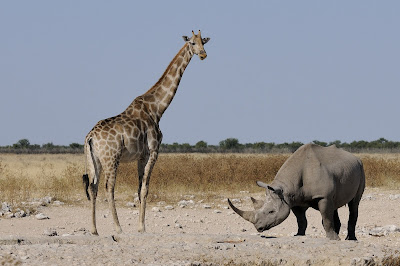Breakthrough theory suggests emotions and mood underpin animal behaviour, much like in humans
Years ago, I reported for Slate on animal relationships across species - not only are humans fond of their cats, but it turns out, it is not uncommon for dogs and cats to bond, as any Youtube search will prove. Less common is the cheetah and the dog, but even that relationship is part of the animal experience.
"Animals can forge bonds across species boundaries if the need for social contact pre-empts their normal biological imperatives. A cat raised with dogs doesn’t know it’s a cat, the logic goes," my piece started.
So I found it very interesting that a new study out of the UK talks about an aspect of this topic, animal emotions.
The new theory from researchers at the School of Biological Sciences at Queen’s University Belfast suggests that animals experience emotions like we do - showing positive moods when they “win” and sour moods when they “lose”.
Their findings have been published in the journal Proceedings of the Royal Society B.
Using animal contests as a case study, the authors state that competition between animals stems from resources being limited. "There are simply not enough of some resources for all individuals to have equal access and supply."
Until now, contest researchers have focused on how animals assess the value of a resource and an opponent’s fighting skill. The researchers argue that these assessments contribute to animals’ emotional state, and this drives animal behavior.
The researchers suggest just as depressed or anxious humans are more pessimistic about the future, animals that lose fights will be in a more negative emotional state and more pessimistic about whether they can win, and so are less willing to engage in future fights.
Interestingly, the authors found that anxiety is adapative, in that when an anxious animal hears a rustling of leaves he may interpret that as a predator. The sound itself, which could simply be the wind, creates the anxiety.
“Stimuli or events that elicit emotional responses might influence virtually any decision - potentially with life-or-death consequences," says Andrew Crump, Postdoctoral Researcher from the School of Biological Sciences at Queen’s and Lead Author. "Anxious animals will probably interpret the rustling as a predator and run away. This mood is adaptive when the anxiety is relevant, e.g., if it was induced by previous experience of predator attacks. But the mood is maladaptive if it was induced by something else - say, losing a contest. In these circumstances, when the emotional basis of the decision is unrelated to the decision itself, we predict maladaptive decision-making.”
In addition, despite the study’s focus on contests, the research proposes this emotion theory may underpin all non-reflexive behaviour in animals - from signaling, to mate choice and parental care.
Crump told me in an e-mail that, "We developed a new theory, rather than carrying out a new experiment. So, we're using the whole contest literature as a case-study (i.e. reinterpreting results from previous studies). These existing studies cover thousands of individuals belonging to hundreds of species (everything from monkeys to hermit crabs). We believe that emotions explain these findings better than current theories. The idea is novel; the results aren't. Our lab is running experiments testing the theory (i.e. the role of emotions in animal contests), but we don't have results yet."
Dr. Gareth Arnott, Senior Lecturer from the School of Biological Sciences and Principal Investigator said that understanding animal emotions and why they evolved will help scientists and researchers measure and improve animals' emotional states and welfare.
Emotions have multiple components that can be measured empirically, the researchers write. These include changes in cognition (information-gathering and processing), drive (manifested as the work animals will invest to access reward or avoid punishment) and neurophysiology (central and peripheral nervous system activity, and neuroendocrine function). Such changes fuel the performance of animal behavior, producing a response to reward and punishment. Threatening stimuli,such as the aforementioned rustling of leaves, impact cognition (increasing attention to the threat), drive (maximizing the work animals will invest in performing freeze, fight or flight responses) and neurophysiology (activating both the sympathetic nervous system and hypothalamic–pituitary–adrenal axis). These changes prepare the individual for behavior such as escaping the perceived threat.
“Understanding these emotions also has practical benefits for the future of animal welfare. Good welfare requires animals to have few negative emotions and lots of opportunities for psitive experiences. Understanding animal emotions and why they evolved will, therefore, help us to measure and improve animals' emotional states and welfare,” said Arnott.
The research team involved researchers from Liverpool John Moore's University, University of Alabama, Scotland’s Rural College, and the University of Bristol and was funded by Northern Ireland's Department for the Economy.
PHOTO: Diceros bicornis (Black Rhinoceros) and Giraffa camelopardalis (Northern Giraffe); By Hans Stieglitz




Comments
Post a Comment